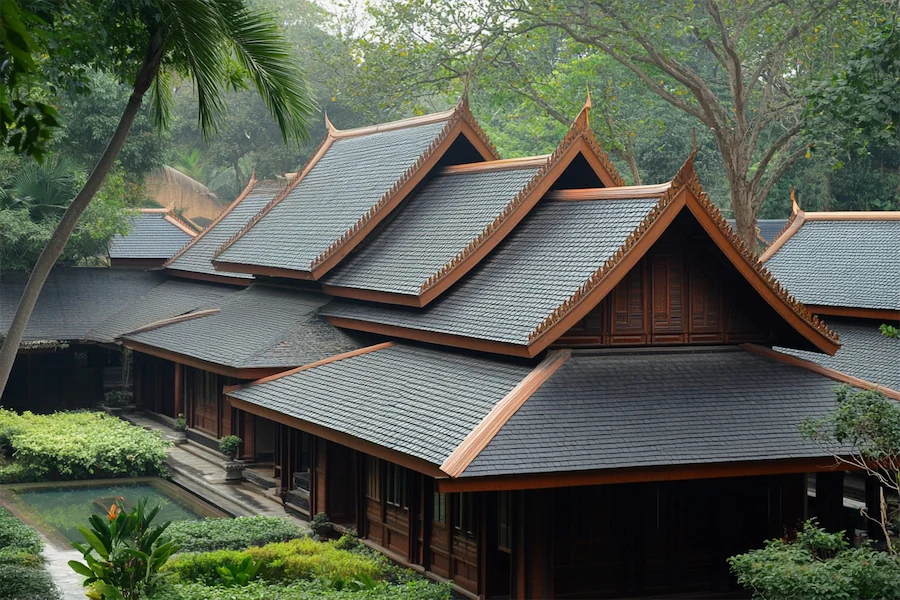Thai temples, known as wats, are renowned for their intricate and symbolic roof designs, which are central to Thailand’s architectural identity.
History and Origins of Thai Temple Roofs
The evolution of Thai temple roofs reflects a blend of indigenous styles and external influences, notably from India and China. The introduction of Buddhism from India brought architectural elements such as stupas and artistic motifs, while Chinese influence is evident in the sweeping roofs and decorative porcelain tiles.
Over centuries, these influences merged with local traditions, resulting in the distinctive multi-tiered roofs seen today.
Key Features of Thai Temple Roofs
Thai temple roofs are characterized by several distinctive features:
- Multi-Tiered Structure: Roofs often have multiple tiers, typically in odd numbers (three, five, or seven), creating a dynamic visual rhythm. The lowest tier is the largest, with each successive tier reducing in size, giving the roof a lighter appearance.
- Curved Eaves: The eaves curve gracefully upwards, a design that not only adds elegance but also facilitates water runoff and provides shade. This curvature is symbolic, representing openness and the lifting of one’s spirit.
- Decorative Finials: At the peaks and corners of the roofs, ornamental elements called chofah are installed. Shaped like a bird’s beak, they are believed to represent the mythical creature Garuda, symbolizing protection.
- Bargeboard Decorations: The edges of the roof are adorned with lamyong, undulating serpentine shapes evoking the Nāga, a mythical serpent. These elements, along with blade-like projections called bai raka, suggest both Nāga fins and the feathers of Garuda.
Applications of Thai Temple Roofs
Beyond their aesthetic appeal, Thai temple roofs serve practical purposes:
- Climate Adaptation: The steeply sloping roofs are designed to shed heavy rainfall efficiently, crucial in Thailand’s tropical climate.
- Symbolism: The architectural elements reflect Buddhist cosmology and local beliefs, with each component carrying specific meanings related to protection, spirituality, and the connection between the earthly and the divine.
Considerations When Choosing Thai Temple Roofs
When selecting or restoring a Thai temple roof, several factors should be considered:
- Material Selection: Traditional materials like terracotta tiles are preferred for authenticity, though modern materials may be used for durability.
- Craftsmanship: The intricate designs require skilled artisans familiar with traditional techniques to maintain cultural integrity.
- Cultural Significance: Incorporating traditional design elements that reflect the intended symbolic meanings and historical context of the temple is essential.
Conclusion
The roofs of Thai temples are more than architectural features; they are expressions of cultural values, aesthetics, and philosophical ideals. Their designs continue to inspire and captivate, representing a timeless connection between architecture and the spiritual world.
